
Update: Cytoplasmic mRNA dynamics
Blog, Plant Physiology: Updates, Research, Research BlogBy Thanin Chantarachot and Julia Bailey-Serres
The export of an mRNA from the nucleus to the cytoplasm begins an odyssey of dynamic regulation that determines the location, longevity and use of the transcript in the production of polypeptides by ribosomes in plant cells. Recent leveraging of mutants,…
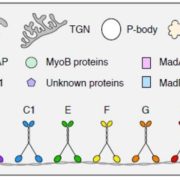
Update on Myosin Motors: Molecular Mechanisms and Physiological Functions
Blog, Plant Physiology, Plant Physiology: Updates, Research, Research Blog By Jennifer M Ryan and Andreas Nebenfuehr
The cytoskeleton is the main organizing principle that defines not only the distribution of cellular components within cells but also the overall shape and growth pattern of cells and entire multicellular organisms. This function is particularly evident in…
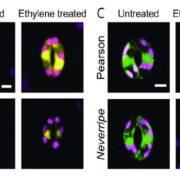
Flavonols Modulate ROS in Tomato Guard Cells
Blog, Plant Physiology, Plant Physiology: On The Inside, Research, Research BlogAlthough reactive oxygen species (ROS) have historically been considered damaging agents within cells, recent studies have demonstrated that these molecules also serve as second messengers in signaling pathways. The reactive nature of ROS allows these compounds to function as signaling molecules by reversibly…
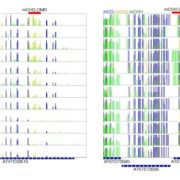
Arabidopsis DNA Methylome Stability under Stress
Blog, Plant Physiology, Plant Physiology: On The Inside, Research, Research BlogIt has been speculated that DNA methylation could complement genetic variation, as a mode for transferring heritable information, to contribute to phenotypic variation. Indeed, DNA methylation states can be maintained faithfully over both mitotic and meiotic cell division. According to this view, any…

Origin and Role of ABA in Stomatal Regulation
Blog, Plant Physiology, Plant Physiology: On The Inside, Research, Research BlogWhen the vapor pressure difference (VPD) between a leaf and the atmosphere increases (i.e., when air humidity decreases), guard cells lose turgor, thereby leading to stomatal closure. The evolution of this mechanism was an important step in the colonization of land by plants, since it enabled plants…
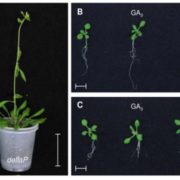
GA Signaling Increases Cytosolic Calcium
Blog, Plant Physiology, Plant Physiology: On The Inside, Research, Research BlogGibberellins (GAs) regulate many aspects of plant development, including seed germination, stem elongation, flower induction, and anther development. DELLA proteins, of which there are 5 in Arabidopsis (Arabidopsis thaliana), play a central role in GA signaling. GA triggers DELLA degradation via the…
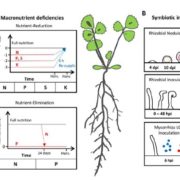
The Small Secreted Peptides of Legumes
Blog, Plant Physiology, Plant Physiology: On The Inside, Research, Research BlogSmall secreted peptides (SSPs) are peptides of 5 to 50 amino acid residues that are secreted into the apoplast. SSPs are critical regulators of a diverse array of growth and developmental processes in plants, including root growth, nutrient homeostasis, meristem maintenance, stress acclimation, pathogen…

Disarming the Assassins Within: Plant Cells Use S-Nitrosylation to Deactivate the HopAI1 Effectors
Blog, Research, Research Blog, The Plant Cell, The Plant Cell: In BriefThe assassin who injects a bead of poison by stabbing his victim with the tip of his umbrella has got nothing on plant pathogenic bacteria such as Pseudomonas syringae, which injects dozens of effector proteins into plant cells. These effectors act as tiny assassins to take out host defenses by diverse…
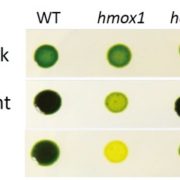
Blue Light Perception via Chlorochrome? — Give Us the Greens of Summer
Blog, Research, Research Blog, The Plant Cell, The Plant Cell: In BriefWhat do photosynthesis, neonatal jaundice, and a next-generation solar cell have in common? All involve tetrapyrroles, complex molecules with four linked pyrrole rings, each ring containing one nitrogen and four carbon atoms. Tetrapyrroles exist in either cyclic or linear form and have a wide variety…

